After installing our first Laser Powder Bed Fusion Additive Manufacturing system, we learned a lot, and while he was at PADT, Dhruv Bhate kindly wrote up a series of blog posts on what we learned.
Here are the articles:
What are the safety risks in laser powder bed fusion metal 3D printing?
This is the first half of the 3rd post in a series of 5 on things we learned installing a metal 3D printer (laser powder bed fusion). Links to previous posts are below:
- Part 1: Equipment needed (beyond the 3D printer)
- Part 2: Facilities requirements (electricity, water, ESD mats etc.)
The most important discussions around installing and operating a metal 3D printer involve safety. The requirements can be difficult to pin down since they depend on several things: whether you are using reactive or non-reactive alloys (read a previous post on this subject here), the risk perception of your local building safety director and fire marshal, local regulations (and exceptions) and the volume of material you are dealing with. As with all things safety and more so because of how nascent metal 3D printing technology is, I list a few disclaimers at the bottom of this page.
There is so much to say about safety in this process that half-way through writing this post, it became clear it would not fit in one post. Therefore, I have split the content into two: in this post (3A) I talk about the risks: where they come from and why they matter. In the next post (3B), I will discuss how these risks can be mitigated.
1. Sources of Risk
Broadly speaking, I like to think of two sources of risk in this process since as an operator of these machines you have to think differently about how you interact with these sources.
1.1 Metal Powder
Metal 3D printing involves fusing together powder in a bed. Typical metal powders used for laser based 3D printing are spherical in shape and range from 10-70 microns in diameter, as shown in Figure 1. At this size, a metal can be prone to fire and explosion (under the right circumstances) and there is also the physiological concern of long-term inhalation of, and contact with, these powders. The powder also has a long life cycle and requires human interaction at many steps – from arriving in a container (as shown in Figure 2), through multiple recycling steps through final disposal. These risks come into play just when handling the powder (independent of its use in the process) – an additional risk comes from the melting process itself.
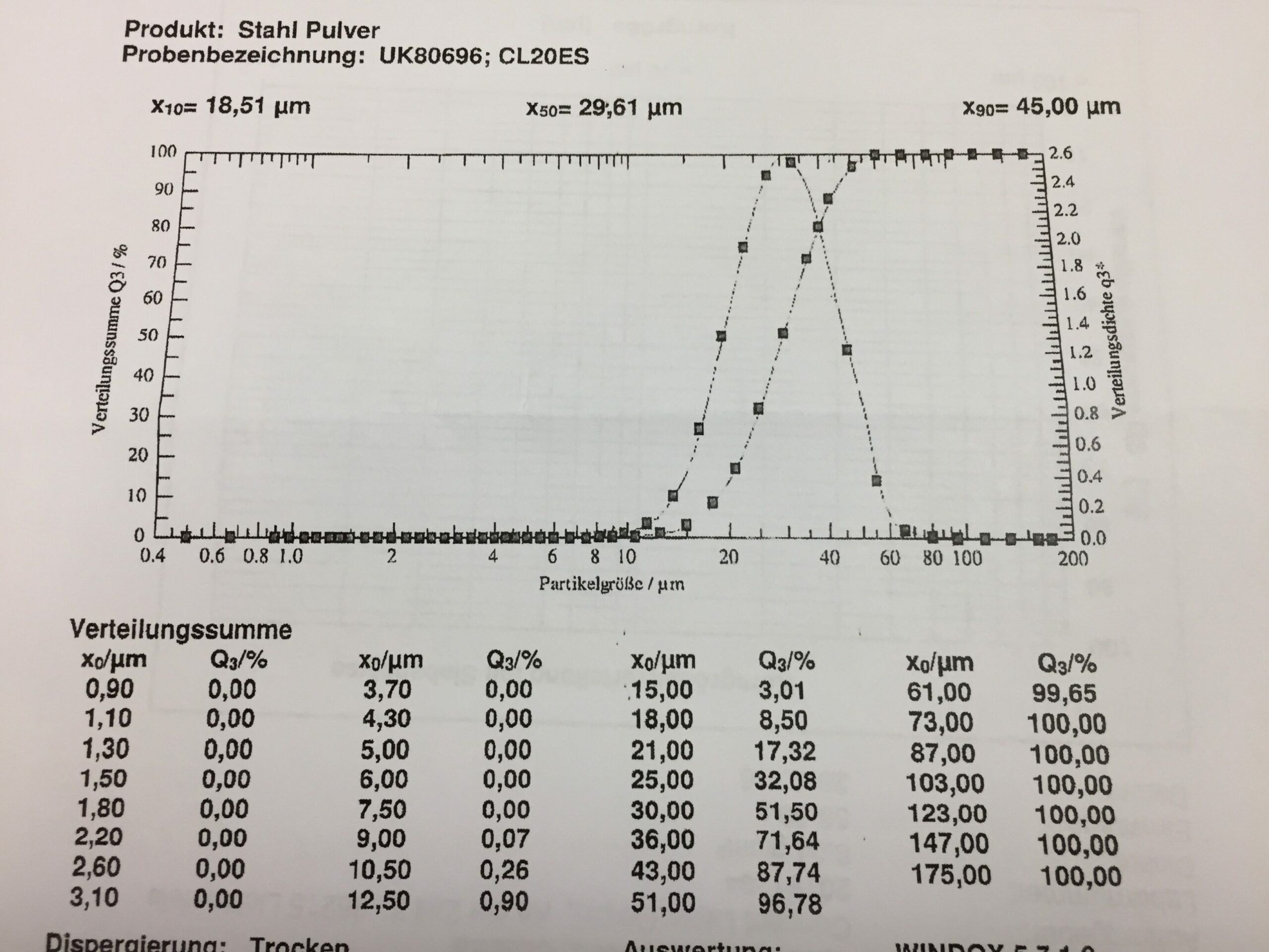
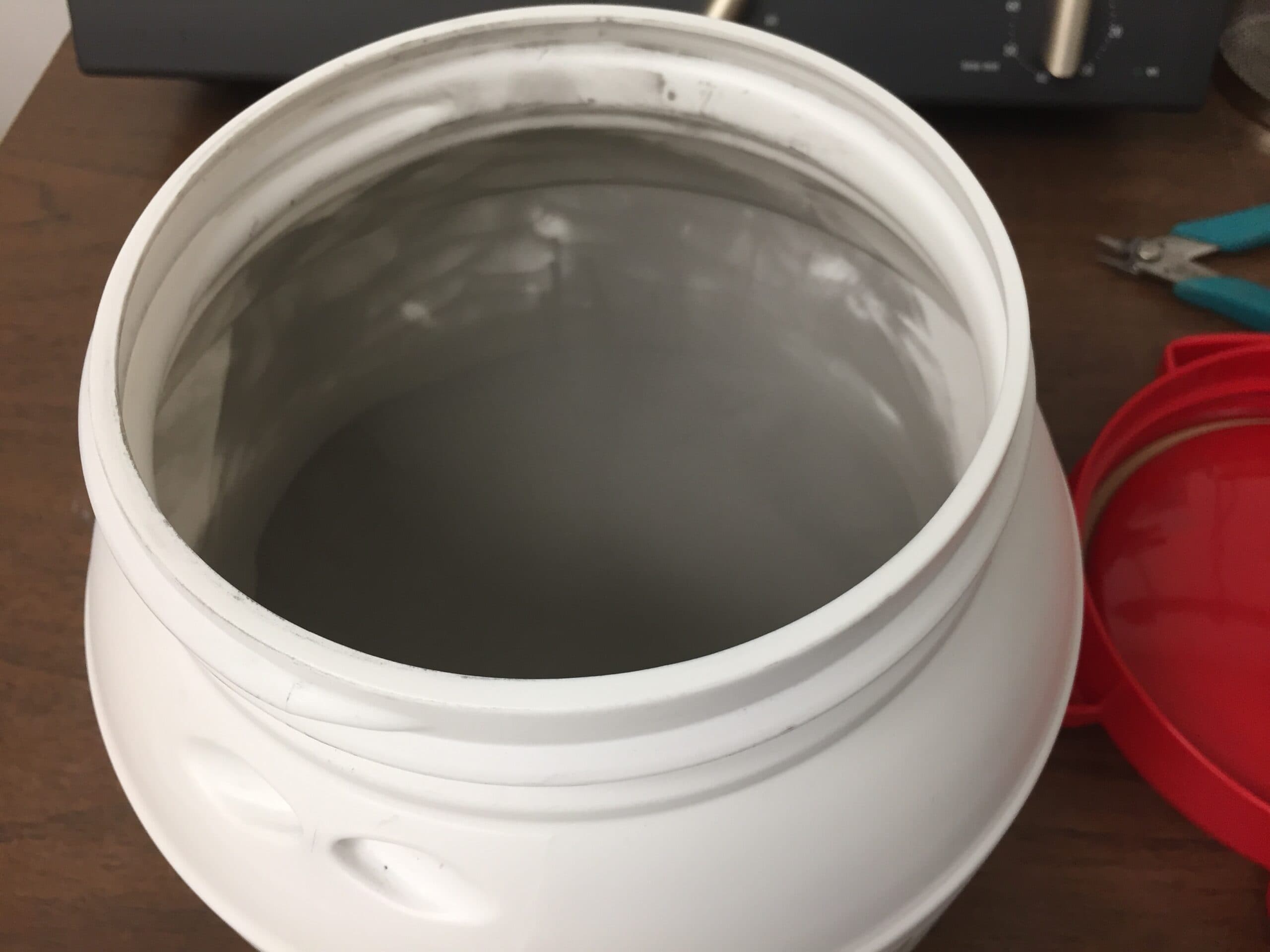
1.2 The Laser Fusion Process
The powder in the bed described before is fused together into a solid using a laser that locally melts the powder one layer at a time. This is conducted in an inert atmosphere (Argon or Nitrogen) and is the second source of risk since these gases can displace Oxygen from a closed environment. Additionally, the process of laser melting of metals creates vaporized soot (see video below), some of which deposits on the process chamber and in the extraction module and filter. The smoke particles can be even finer than the powder itself, and need to be cleaned out with care on a regular basis.
2. Risks
There are 4 main risks arising from the laser powder bed fusion process: fire and explosion, powder inhalation and contact, inert gas asphyxiation and the environmental impact of the wastes generated.
2.1 Fire and Explosion
In May 2014, OSHA cited a 3D printing company for 10 violations deriving from the workplace safety standards surrounding the operation of a metal 3D printer (including not having the proper Class D fire extinguisher). The disregard of multiple safety measures during a routine build setup procedure resulted in a fire which caused life-threatening burns to the operator of the printer. While this incident was the result of gross negligence, it is nonetheless a cautionary tale that should drive us to understand the fundamental reasons why a metal 3D printer can cause fires and to appreciate the underlying reasons for why suppliers recommend the safety measures they do.
Fire and explosion require a combination of conditions as shown in the commonly cited image below used by OSHA and other agencies to communicate risks of powder handling.
As shown in Fig. 3, when handling powder in ambient atmospheres (with oxygen), all that is needed is a suitable ignition source to initiate a fire. Further, if this occurs in the presence of a dust cloud with many particles dispersed in a contained area (such as a small room or an air duct), this could lead to a more damaging explosion.
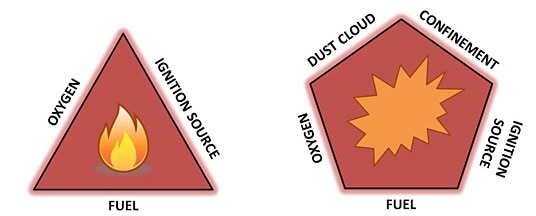
- Fire: When handling metal powder, the user needs to be aware that she/he already has 2 of the 3 requirements of a fire met and the main aim must be to ensure protection against any ignition source. There are several sources that could cause an ignition, the most likely one for a user of a metal 3D printer is static electricity. Additionally, it is possible that a fire can be initiated by hot surfaces, flames, hot gases and particles, mechanically generated sparks and strayelectrical currents.
- Explosion: With regard to explosions, in addition to the 3 requirements above, dust clouds in contained areas can exacerbate any ignition to a much larger impact within milliseconds. Therefore, the prevention of the formation of metal dust clouds (as unlikely as that may seem), is of paramount importance.
In addition to the requirements above, there are levels associated with each requirement that need to be met together for an actual fire or explosion to occur. The risk of ignition increases with reducing particle diameter and given a certain particle size, the most significant factor governing risk is the nature of the metal. Reactive metals (Aluminum alloys, Titanium and its alloys, as well as smoke particles from both reactives and non-reactives) pose much higher risk than non-reactive metals (steels, Inconels, bronze, Cobalt Chrome alloys) – this is a subject I wrote about in more detail in a previous post.
2.2 Powder Inhalation & Contact
As discussed before, most metal 3D powder particles range in size from 10-70um. This is at the very edge of what is considered respirable and damaging to our lungs. While contact physically is to be avoided since it may initiate irritation and potential dermatitis, there is greater concern about the long-term inhalation exposure risks of these powders. Particles of the size range in this process can get deposited in the tracheo-bronchial region per Jenson [1] and Goldich [2]. Ultimately, these particles are discharged from the body or swallowed, but effects of long term exposure for the wide range of metals and alloys is not fully studied – which is why suppliers insist on respirators (more on that in the next post). It is worth pointing out though, from the work published by Jenson and Goldich, that it appears that while metal 3D printing powders are small enough to travel past the nasal cavity if inhaled, their sizes are large enough that respiratory damage in the lungs is highly unlikely – only particles under 2 microns are at risk of making it all the way to the alveoli and causing lung disease [2].
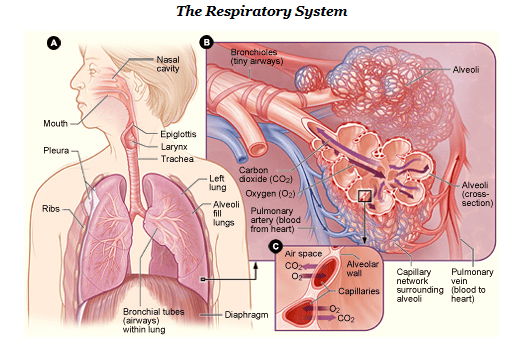
2.3 Inert Gas Asphyxiation
Inert gases are used in laser metal 3D printers to reduce the reactivity of the metal for processing purposes. Most metal 3D printers either use Nitrogen or Argon. Inert gas asphyxiation is the main risk due to oxygen being displaced by either of these gases that have leaked for some reason. Since both gases are not detectable by humans, victims do not realize that they are inhaling air depleted of oxygen and as a result this can have a serious impact. The human body is used to atmospheric percentages of oxygen (21%) and values below 19.5% can be harmful and are defined as oxygen-deficient per OSHA [3]. Thus, any user of nitrogen or argon gas (and this applies not just to any process using inert gases), especially in small spaces such as a closed room, needs to be aware of this risk and protect against it.
2.4 Environmental Impact
A key challenge with powder based processes lies in collecting and disposing the stray or “fugitive” powder from different locations such as the tool, PPE, containers and vacuum systems into temporary storage, during which the above risks of fire/explosion and inhalation remain. Additionally, the storage typically results in loose powder and solid waste as well as water with powder particles, both of which need to be disposed into the outside world and could pose an environmental hazard. I will discuss this further in a future post, when I attempt to look at some of the environmental aspects around this technology.
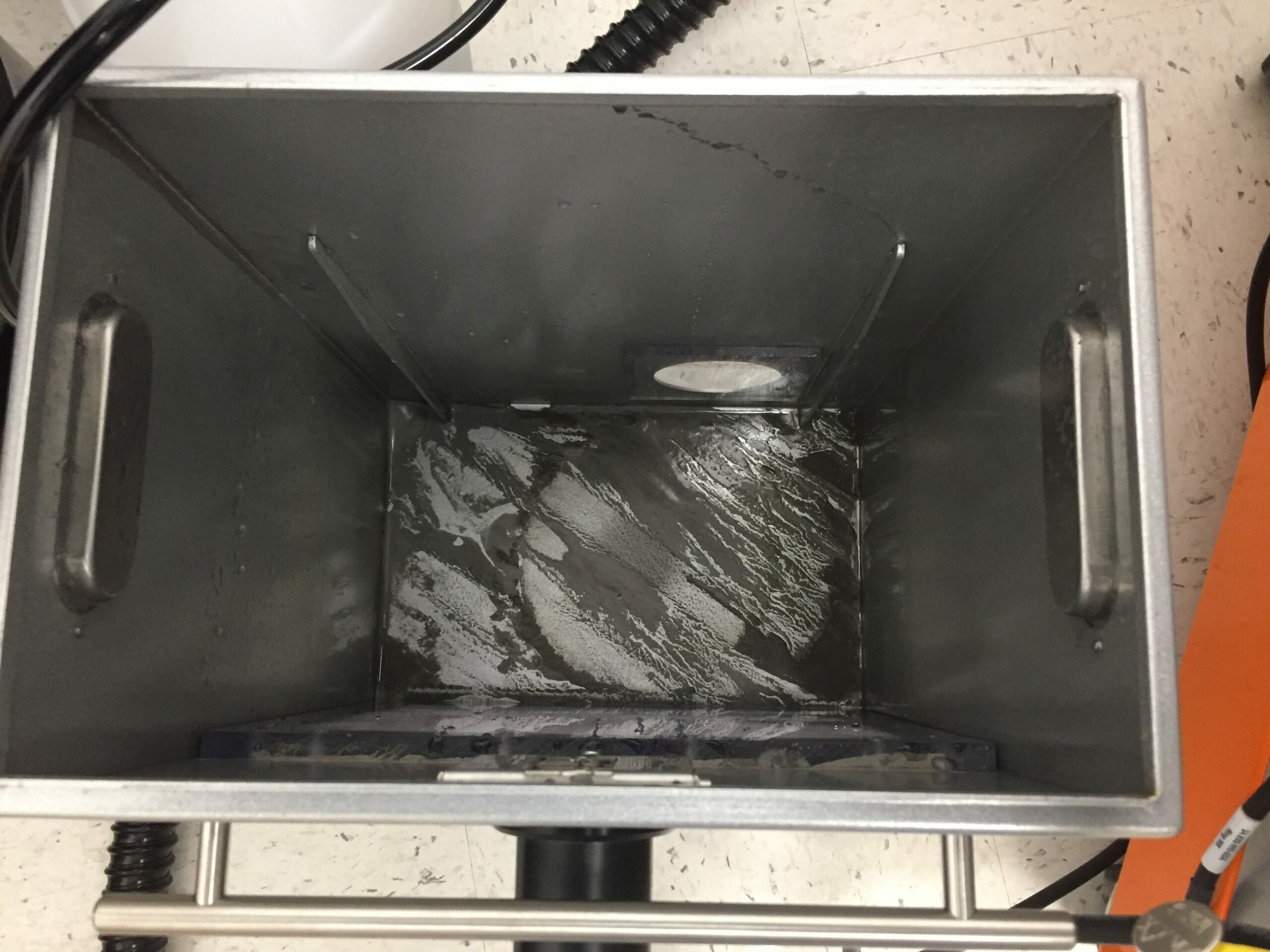
3. Disclaimers
- This is intended to supplement the supplier training you must receive before using the equipment and not meant to replace it – in case of conflicting information, your supplier’s training and equipment requirements override any discussion here. PADT assumes no legal responsibilities for any decisions or actions taken by the readers of this document.
- My personal experience derives specifically from the use of Laser-based metal 3D printing tools, specifically Concept Laser’s MLab Cusing R equipment. I expect majority of this information to be of use to users of other laser based powder bed fusion metal systems and to a lesser extent to Electron Beam systems, but have no personal experience to vouch for this.
- Local, state and federal regulations vary, and are important – partner with your local fire marshal (or equivalent authority) as a starting point and take them along with you every step of the way. If in the US, familiarize yourself in particular with OSHA’s guidance on dust explosions [4] and NFPA 484 [5], the National Fire Protection Association’s standard for combustible metals (links below).
4. References
- J.M. Benson, “Safety considerations when handling metal powders,” Southern African Institute of Mining and Metallurgy, 2012
- R. G. Goldich, “Fundamentals of Particle Technology,” Chapter 15, Midland IT and Publishing, UK, 2002
- OSHA on Oxygen Deficiency
- OSHA’s Guidance on Dust Explosions
- National Fire Protection Association’s standard for combustible metals, NFPA 484
- D. Bhate, “Reactive and Non-Reactive Metal Alloys in Laser-based Powder Bed Fusion,” PADT Blog Post, 2016
Acknowledgements
Thank you to Perry Harlow-Leggett, the AM team at UL whose articles and webinars I have benefited from, and all the folks behind the scenes at OSHA and NFPA.
~
Continue Reading:


















